Mega Man Network Transmission Links Battle Network to Its Roots - Mega Man Monthly
There are Zero Viruses here!
Welcome to the April edition of Mega Man Monthly. If you’re familiar with the expression “April showers bring May flowers,” you can consider this month to be my attempt to drown you in a torrent of Battle Network. It’s a big month for the series, after all. Between my frankly way too long review of the Battle Network Legacy Collection and this article, I’m leaving little opportunity to breathe. As for what May flowers this barrage of Battle Network will bring…who knows! I don’t figure these things out that far in advance!
Battle Network marked a major departure from what Mega Man was traditionally understood to be. Prior deviations like Mega Man X or Mega Man Legends brought their own changes, yet walked paths that could still easily be traced back to the franchise’s starting point. Unlike other Mega Mans, Battle Network stands far enough apart from its predecessors that it can be considered its own distinct entity. Within that distance Battle Network created, however, lies an opportunity for a clearer connection. Mega Man Network Transmission bridges the gap, linking Battle Network to its platforming heritage. The link that Network Transmission establishes reveals that in many ways, these disparate directions for the Mega Man franchise aren’t as estranged as it seems.
Not quite a traditional platformer and certainly not a traditional Battle Network installment, Network Transmission mixes elements of both into a Trojan horse virus of a game. A quick glance at Network Transmission resembles everything that Battle Network abandoned: a two-dimensional platformer, albeit with three-dimensional graphics, full of all the jumping and shooting you can handle.
That’s how they get you. “They” being the CapCommittee working from the shadows that undoubtedly greenlit this game with undoubtedly shadowy intentions. Their devious plan? Use the bridge that Network Transmissions builds to connect two separate corners of the Mega Man market. If you read between the lines of what former Mega Master Keiji Inafune had to say about Network Transmission, he makes this clear:
“After the GBA got released, we realized if we were targeting children, the most suitable platform would probably be portable gaming. With that in mind, we developed [Battle Network]. Then we thought that kids that have GBAs are showing interest in the GameCube…
…When we asked how we should transcend the action elements of the current [Mega Man platformers], we started by wondering whether we should use the perspective of [Battle Network]. Returning to the original point, which includes returning to Nintendo, we rethought about what exactly is fun about [Mega Man platformers]…
…We did not make the game for people that liked [Mega Man platformers] in the past, but we hope that even when those people play, they will remember the series and its fun gameplay”
Network Transmission exists primarily to wean over the kids who like Battle Network into the broader Mega Man platforming experience. Mr. Inafune clearly considered the opposite result, that older platforming fans may take an interest in Battle Network, to be more of a serendipitous side effect. While the end product balances how it caters to each audience a little more than Mr. Inafune’s statement implies, Network Transmission absolutely leans heavier on its Battle Network traits. The “Battle Network first” approach characterizes how Network Transmission is designed, from its more unique mechanics down to its basic feel as a platformer.
Mega Man veterans will likely notice this difference from the moment they touch the controller. Network Transmission does not control poorly, but it does control differently from other Mega Man platformers. Mega Man.EXE moves at a more relaxed pace than his robot counterparts. He feels a little lethargic, perhaps due to the fact that he typically spends his time warping between squares. Actions like shooting follow with a slight delay before you regain control that can leave you more vulnerable than you’d expect. Design choices like these subtly force you to take your time and consider your next move more strongly than you might otherwise with a faster-paced game.
This pace fits Network Transmission’s defining mechanic: the Battle Chips. Just like the Battle Network games, Mega Man utilizes a selection of Battle Chips that grant him new abilities in addition to his basic moveset. In Battle Network proper, the fun of the Battle Chip system relies heavily on the folder building. You can consider Battle Chips to be like trading cards and your folder to be the deck of cards you build to your specifications.
During a normal Battle Network game, you only need to worry about your Battle Chip selection for fights that typically last from 5 seconds to a minute at a time. Those small time frames complement the deck building mechanics such as the code system. This system encourages you to craft your deck around Battle Chips with a similar code, allowing you to select a wider variety of Battle Chips per turn. The rapid shuffling of your deck from battle to battle also encourages you to put multiple copies of the same Battle Chip into your folder in order to narrow down your strategies into easily repeatable options that are regularly available.
While conceptually similar, the process works differently in Network Transmission. You draw a selection of Battle Chips at the beginning of each stage. While you have the option of drawing more once a meter fills, it takes a lot longer to fill than in a Battle Network game. You’re stuck with what you draw for a relatively long time; a lot longer than a few seconds, anyway.
With these longer stretches in mind, Network Transmission tosses out many of the limits a Battle Network deck imposes. Due to the absence of chip codes, you can essentially fill your deck up with whatever you like. You don’t even need to worry about filling your folder with duplicates – including a single Battle Chip will allow you to use it as many times as you have copies of it.
In the context of an action card game, that may make things less interesting. In the context of a platformer, this opens the game up significantly. It also expands on the Mega Man platformers in a surprisingly logical way.
Battle Chips may appear to be a foreign concept to traditional Mega Man, but they tap into a familiar vein. Network Transmissions makes this connection clearer by recontextualizing their use in a platformer. Traditional Mega Man games add in a dose of strategy through their use of boss weapons; the more bosses you defeat, the more weapons you add to your arsenal. While these weapons prove most effective against other bosses as a way to exploit their weaknesses, that’s not their only function. The best weapons offer additional utilities, like projectiles that launch in directions Mega Man’s basic shots can’t reach, or aid in platforming.
Essentially, Battle Chips work on the exact same principle. Rather than limiting the powers you gain to bosses, however, Battle Chips open the door to every single enemy in the game expanding Mega Man’s possibilities. They broaden Mega Man’s versatility so much that if left unchecked, the system would quickly become unwieldy. While the folder building rules may seem lax in comparison to Battle Network, then, they work to the game’s benefit by maximizing their platforming utility while keeping your selections manageable.
The ever-changing rotation of Battle Chips emphasizes the strategy component of Mega Man to a far greater degree than other platforming entries. In turn, that shift in focus slows the pacing of the game down. Just like in Battle Network, you’ll want to take a minute to consider your options. Even when you’ve selected your Battle Chips, you may need a moment during the heat of action to think about which Chip applies best to your situation. While the slower pace of the game generally accommodates some extra time to think, Network Transmission actually goes so far as to let you enter a “Standby Mode” at the press of the button, which lets you freeze time and select the chip you want.
Network Transmission’s strategy focus can be difficult to adjust to. Mega Man games normally garner a reputation for their difficulty, but this entry stands out among those who play it as especially brutal. That reputation can be traced back to the importance of learning unconventional pace and mechanics. The opening handful of stages in particular give little leeway for players stuck downloading the basics.
Well, most of the levels themselves aren’t actually too bad – the boss fights are the true culprits. FireMan and GutsMan probably made more than a few people cry in frustration…not that I would know anything about that.
Bosses assault you relentlessly and leave you with little room to maneuver around them. To further add to the stress, many Battle Chips simply won’t do much damage on their own so turning the battle into a simple war of attrition isn’t viable. The fastest way to end the nightmare relies on making the right selection of chips that do damage and, more importantly, play on the boss’s elemental weakness when applicable.
These battles drive home the unique strategic element of Network Transmission. Their supercharged difficulties highlight the Battle Network mechanics while evoking the importance of weapon selection that has always been at the heart of Mega Man.
While it’s an interesting system, it’s not a perfect one. The importance of having the right loadout looms large over each boss encounter, which encourages you to do most of your prep work ahead of time. Oftentimes the best strategic move to make is to simply sit back and wait for your meter to fill up a few times. This way you can not only manipulate the chips you have going into battle, but also ensure you have a backup shuffle in case things go wrong. This exploit admittedly kind of goes against the spirit of the game. This is cyber war, though, so erring on the side of caution may be for the best. BrightMan certainly won’t be taking any prisoners
The game also feeds into this cautious approach by blending elements of the different structures of Battle Network and the platformers. In a normal Mega Man, you generally pick from a selection of 4 to 8 robots and defeat them in the order of your choosing. While you might expect a roleplaying game like Battle Network to offer something more open-ended than a platformer, it’s actually the opposite. Battle Network games tend to progress linearly, taking you from one scenario to the next. This makes it unlikely that you’ll be going into a stage with a concrete plan in mind. Instead, adjustments will need to be made once you see what kinds of foes you’re up against.
Network Transmission hops back and forth between these methods. Sometimes you’ll be thrown into a linear scenario, yet occasionally it adopts the more open-ended and traditional Mega Man structure. Cyber incidents will pop up all over a map, and you’re free to tackle them however you choose.
In fact, the game actively encourages you to forego completing stages in a traditional manner at all. With difficult bosses requiring specialized strategies lurking behind each stage, you may find the most success by sampling each area instead of completing them in one run. It’s often best to run through a stage, get as far as you can, and leave before you run out of lives. You don’t keep your progress, but you do keep any Battle Chips and upgrades you find. This method not only lets you scout each area and go in fully prepared, it also lets you scavenge what you need from one area and bring it to another, giving you a greater advantage.
A few Battle Chips in particular can dramatically change how you approach the game. Sometimes the game will block off certain areas unless you have the appropriate Battle Chip, which encourages revisits. A GutsFist to punch down barriers or a Dash Attack to cross gaps work plenty fine, but the biggest game changer is the Double Jump. If you stock up on these, you’ll turn secret hunting and even normal platforming challenges into a breeze.
Although Battle Chips help turn the tides, the upgrade system makes the biggest difference. As you uncover Mystery Data and spend your hard-earned Zenny, Mega Man gains boosts to his health, buster shots, and other stats. Honestly, these upgrades make a little too big of a difference.
What begins as a challenging game gradually becomes trivial as Mega Man grows stronger. By the endgame, it’s almost more efficient to navigate stages without your Battle Chips at all. A charged shot usually solves problems faster and wastes less resources than a powerful Battle Chip. This shift in focus transforms the feel of the game closer to a traditional Mega Man at the cost of its defining idea. While the game remains fun either way, ideally it shouldn’t need to make such a heavy compromise. These upgrade systems come straight from Battle Network and they hardly overtake the Battle Chip mechanics there.
On the surface, these mechanical pulls from Battle Network are just typical RPG stuff. Normal Mega Man doesn’t need any extra hit points to get the job done. When you transfer these upgrades over into a hybrid game like Network Transmission, however, it begins to look a little familiar.
No, I don’t have any esoteric connection to Mega Man platformers as a whole this time. As we all know, the original Mega Man is perfect already. Instead, I’m thinking about Mega Man X and beyond. Just like modern technology, these future iterations of Mega Man require firmware upgrades that they download via the random garbage they pick up off the ground. I assume that’s how X uses those hearts strewn about, anyway. Maybe he just eats them. Later Mega Man series make the upgrade process a major part of their design, and Network Transmission’s progression mirrors this.
Speaking of Mega Man X, Network Transmission also closely reflects that series through its narrative. This time around, a mysterious “Zero Virus” spreads throughout the internet, infecting net navis and causing them to run amuck. That should sound familiar to all of the certified Mega Man historians out there. Battle Network remixes characters and ideas from other Mega Man series often, but it rarely adapts them so directly.
I suppose with Battle Network’s version of ProtoMan already bearing a strong resemblance to Zero they might not have felt the need, but it’s still a little surprising to me that Zero was relegated to this spin-off at all. It’s his only appearance in the series! Battle Network’s depiction of Zero stresses the more villainous side of his backstory, reworking his backstory to fit the world of Battle Network while recreating similar beats to his arc from the X games. Zero’s depiction in Network Transmission ends up being one of my favorite Battle Network reworks because of that despite his relatively limited screen time.
Network Transmission leans into direct adaptations more than traditional Battle Network in general. Many of the game’s stages contain level design and even enemies directly lifted from the NES games. I don’t care much for the old enemies, as their designs are virtually unchanged from their original counterparts. Battle Network’s reworks of old designs are a large part of the charm of the series, so direct recreations feel like the wrong approach.
On the other end of the spectrum, I love how the game works old level design concepts into cyberspace. Not only do Network Transmission’s levels bring ideas dating back to the NES into the third dimension, they flesh them out.
Early Mega Man titles didn’t always make it obvious what kind of environments each level was supposed to represent. You could make assumptions like Elec Man’s stage probably represented some kind of power plant, but Network Transmission’s rendition makes it clear. In my view, the coolest reimagination is QuickMan’s stage. It takes the fairly abstract premise of instant death lasers and contextualizes them as part of a bank’s security system. This not only makes QuickMan look so fast that he outran these lasers as part of his infiltration of the bank, it puts Mega Man on even ground with the speedster if he manages to make it past them as well. Network Transmission’s interpretations of stages add to your imagination in a neat, retroactive sort of way.
The ways in which Network Transmission links up the far corners of the Mega Man multiverse make it an endearing and surprisingly introspective part of the Mega Man franchise. Not every wire it crosses benefits the game entirely, but the connections it makes are interesting nonetheless. If anything, Network Transmission’s greatest strength lies in its demonstration of just how malleable Mega Man’s core concepts can be. Battle Network as a series is all about connections, both in a literal and metaphorical sense, so there really couldn’t be more appropriate territory for a spin-off to cover.
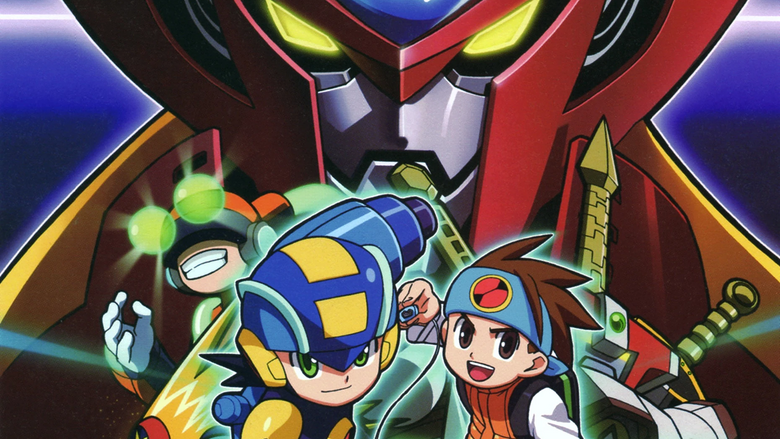
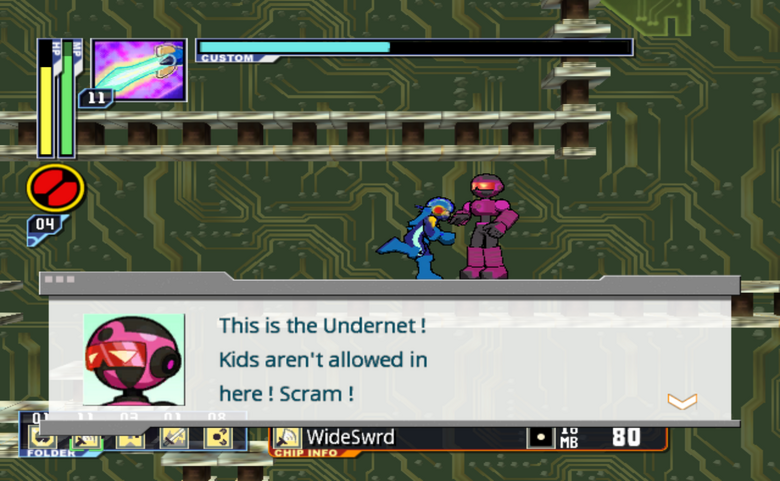
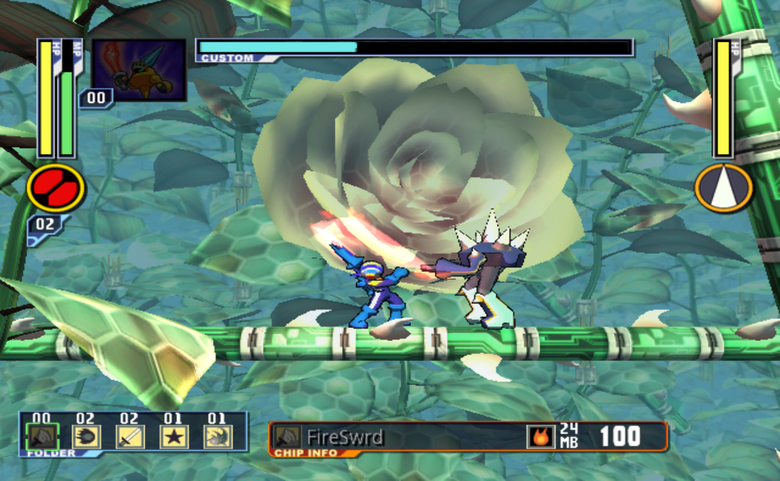
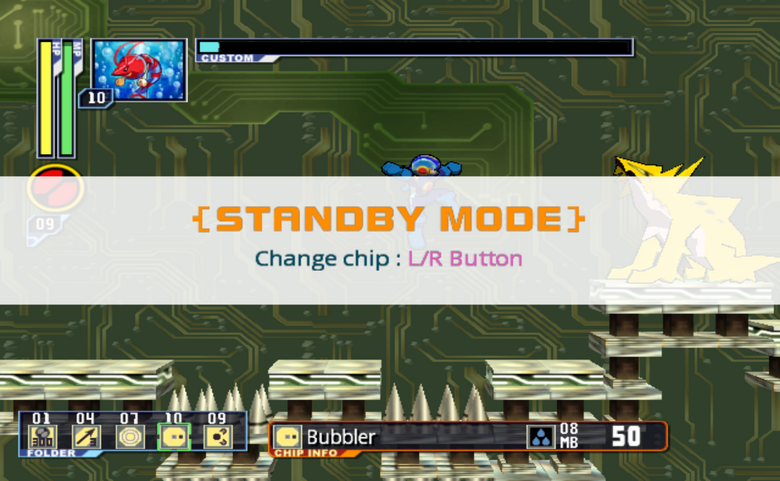
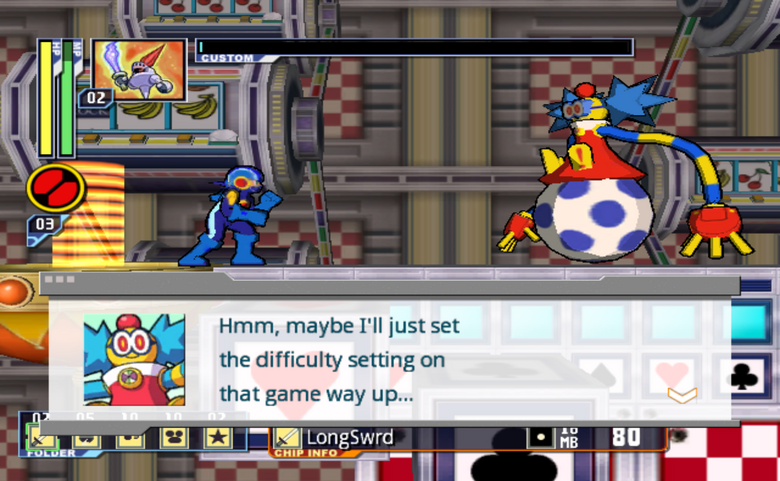
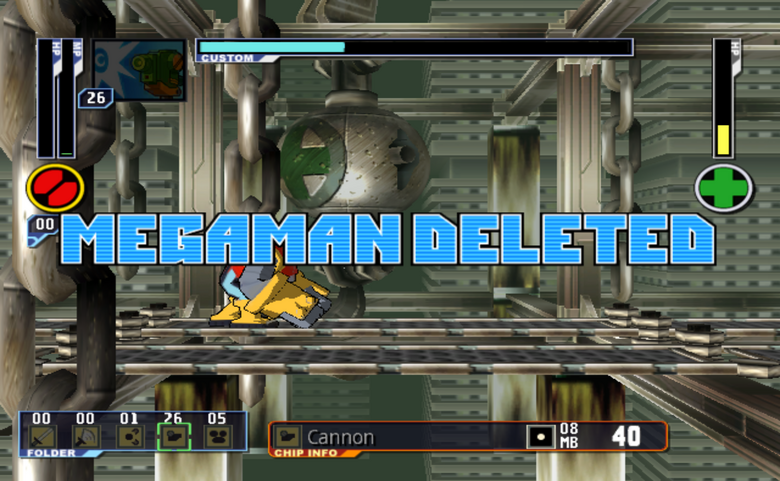
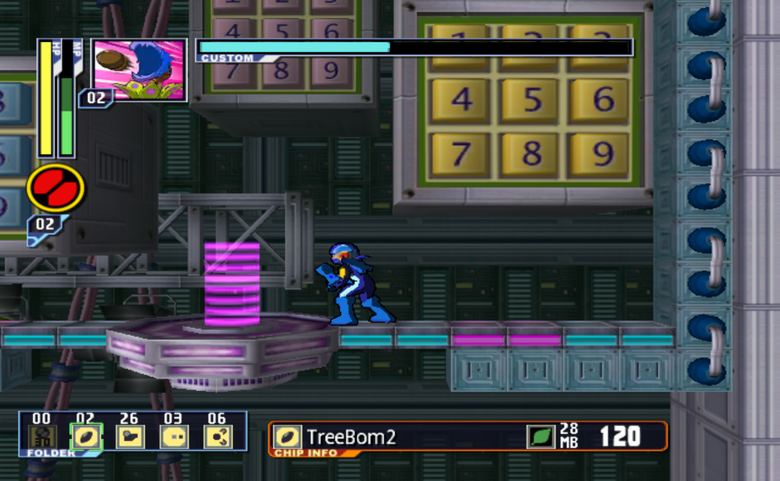
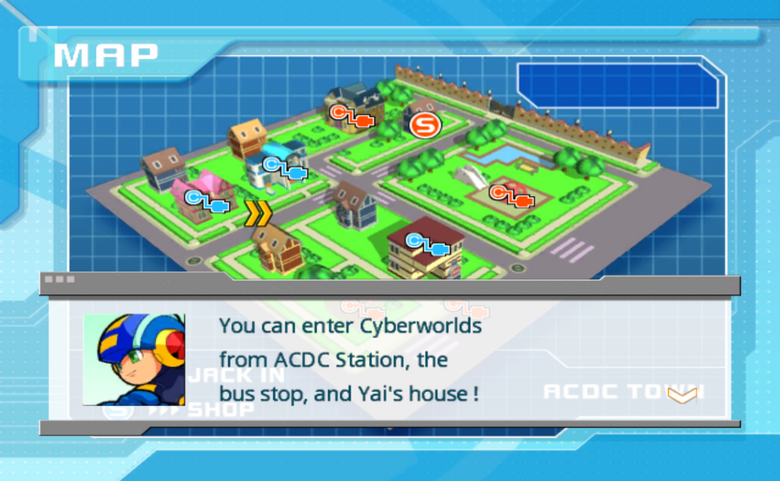
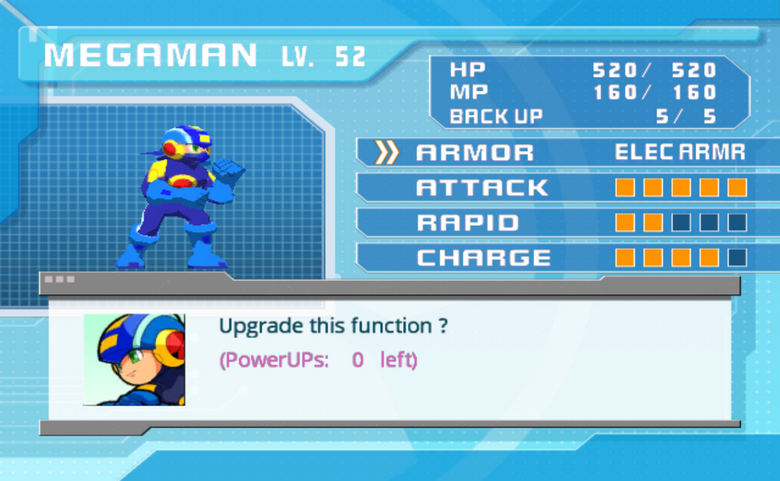
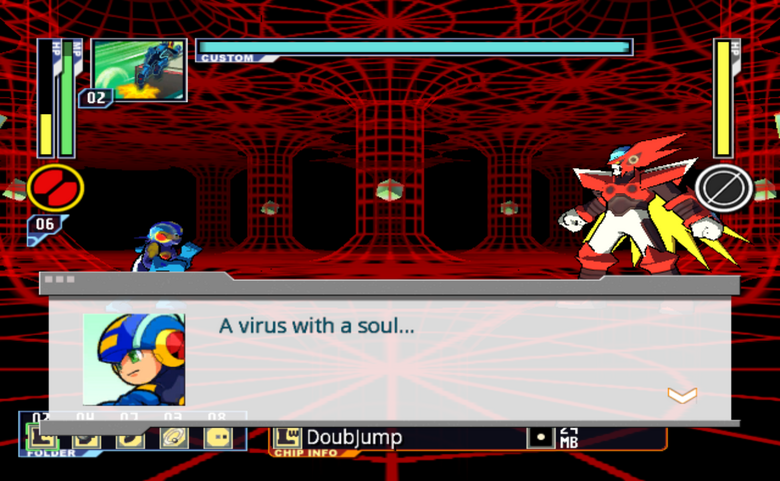
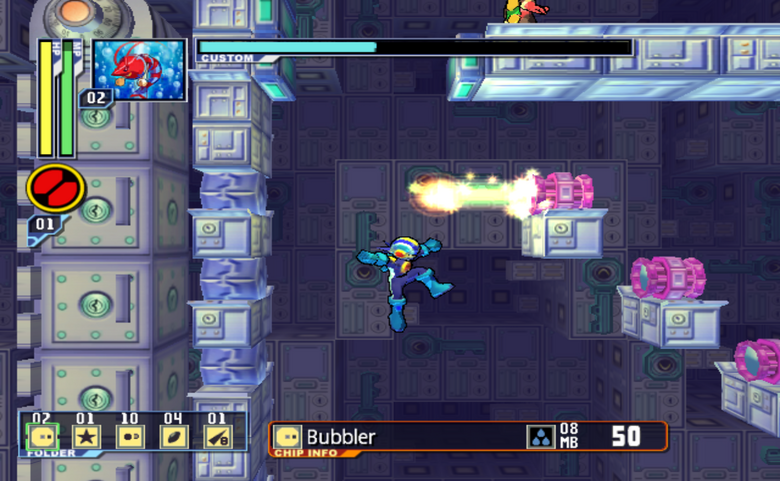
Comments (0)